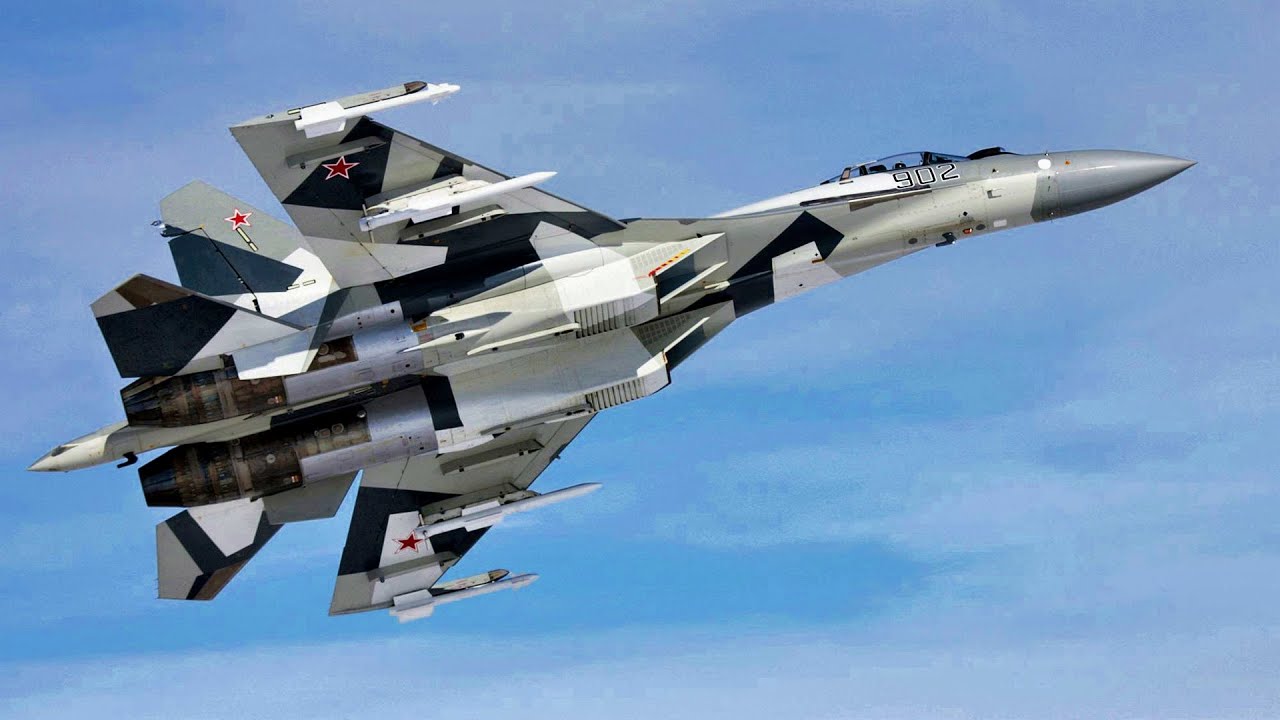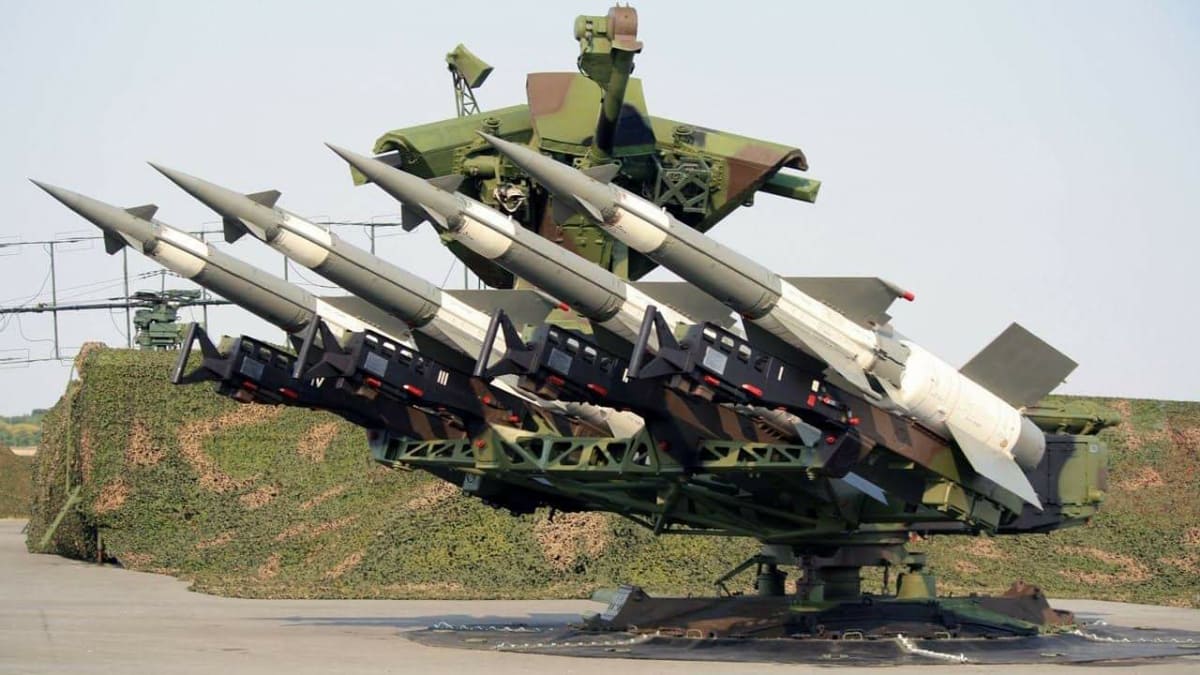As fighting rages across Ukraine with an aggressive Russian push in the Eastern and Southern regions of the country, some Soviet-origin weapon systems deployed by the Ukrainian troops are making Russian troops run for cover.
Recently, a Russian Sukhoi Su-35 which is the most powerful jet in the Russian inventory was shot down by Ukrainian missiles while it was conducting SEAD operations. This was the first-ever loss of the Su-35E Flanker that entered combat service in 2016 and is believed to be the best dogfighter in the Russian Air Force.
Experts confirmed that the Russian Su-35 aircraft was flying to eliminate an air defense system based on the remains found on the battlefield. The Russian Kh-31 anti-radiation missile was clearly visible in the footage.
Now, social media is abuzz with reports that the system responsible for causing this massive casualty on the Russian Air Force was none other than the Soviet-origin S-125 air defense system, which is remembered for its assault against American fighter jets, decades ago. The EurAsian Times has not been able to verify this independently.

S-125 Didn’t Lose Its Sheen
The S-125 is a two-stage, solid-fuel, low-to-medium altitude surface-to-air missile system designed to defend critical government, industrial, and military installations against all types of airborne threats flying at extremely low and medium altitudes, such as bomber planes, fighter bombers, multirole planes, and cruise missiles.
#Soviet S-125 Neva !
the missile that shot down #American F-117#Serbia pic.twitter.com/JUQd7dvGOT— Su-57 5th Gen Fighter (@5thSu) July 24, 2021
Despite having been withdrawn from the Russian military due to its lack of mobility, the S-125 is still in use in more than a dozen countries. Ukraine put its units back into service in late 2020, having upgraded them to the S-125-2D Pechora standard, which gives them a substantially longer range of 40 kilometers.
It is unclear how many Ukrainian S-125 systems were still operational when Russia launched the invasion in late February, although the ones available use static launchers and are hence not very mobile.
Even though the country had already retired its S-125s, domestic companies continued to develop modifications and sustain the system, including testing a new missile in 2018.
With the acquisition of new interceptors with enhanced capabilities and updated radars, the S-125 system changed over time. Complete Pechora systems often consist of a number of truck-mounted or static launchers, as well as a variety of radars for determining target height.

How Did S-125 Shoot Down US Fighters?
The S-125, which first entered service in the Soviet Air Defense Forces in 1961, has a long history of defeating high-performance fighters. The system is best at neutralizing objects at lower altitudes, but as its sensors have improved and its range has grown, it has also developed the capacity to engage higher targets.
The Ukrainian Army has shot down a Russian Su-35 fighter jet over Izyum, near Kharkiv. pic.twitter.com/vLyWgaOAoF
— worldnews24u (@worldnews24u) April 3, 2022
If confirmed, the downing of the Su-35 would cement the S-125’s reputation as one of the deadliest anti-air missile systems in history which already boasts of some unprecedented kills of the best fighter jets in the Western arsenal, back in the day.
During the 1973 Yom Kippur War, the system reportedly downed numerous Israeli F-4E Phantoms, which were at the time the best fighters in the Western world.
The war was fought between the state of Israel and the Arab world led by Egypt. While the former has close military relations with the US, the Arabs leaned towards Soviet military hardware.

The S-125’s most famous kill came in 1999 when Yugoslav troops used it to bring down at least one of two neutralized US Air Force F-117 stealth planes.
It could be remembered as an exceptional kill because the F-117 was the first-ever stealth fighter jet built with a reduced radar signature and advanced design. By shooting down this aircraft, the S-125 had established its supremacy in air defense.
Ukraine’s Defense over Russian Offense
To effectively combat the superior Russian Air Force, Ukrainian President Zelensky pleaded for a ‘no fly zone’ and MiG-29 fighter jets from Poland. However, both these demands were refused by NATO for fear of angering the Russian to the point of escalation. So far, NATO countries have desisted from arming Ukrainian troops with offensive weapons, particularly fighter jets.
However, that has not stopped the resisting troops from giving Russian aircraft as well as tanks a hard time. By making use of ground-based air defense systems and man-portable air defense systems (MANPADS), the Ukrainian troops have registered several kills of Russian aircraft, especially helicopters.
Now, with the casualty of the best fighter jet in the Russian arsenal, Ukraine has proved that it can do a decent job with its Surface to Air Missiles, MANPADS and its anti-tank guided missiles like its own home-grown Stugna.
#Ukraine: A Barnaul-T 9S932-1 command post (Used for coordination of AA batteries) was captured by the Ukrainian Forces NW of #Kyiv, and was immediately put into use by the 72nd Mechanized Brigade. pic.twitter.com/AaVZPPEykm
— ?? Ukraine Weapons Tracker (@UAWeapons) March 3, 2022
Not just this, the Ukrainian troops have also reportedly captured abandoned Russian air defense systems. Ukrainian troops recently got their hands on some of Russia’s most cutting-edge military hardware, including the 9S935, which is compatible with a wide range of Russian air defense systems.
Further, during special surveillance and search operations near one of the settlements, the Ukrainian troops spotted a Russian Buk missile system a day ago. According to Ukrinform, the Command of the Special Operations Forces of the Armed Forces of Ukraine stated this in a Facebook post.
The US also announced a few weeks ago that it was transferring some of the Soviet-made air defense weapons that it had surreptitiously obtained decades ago to help the Ukrainian military defend itself against Russian air attacks. It had also suggested Turkey transfer its Russian air defense systems to Ukraine.
Even though Ukraine is fighting against a force much larger and much more advanced than its own, these weapon systems have allowed it to pose stiff resistance to the aggressor.
- Contact the author at sakshi.tiwari9555@gmail.com
- Follow EurAsian Times on Google News




